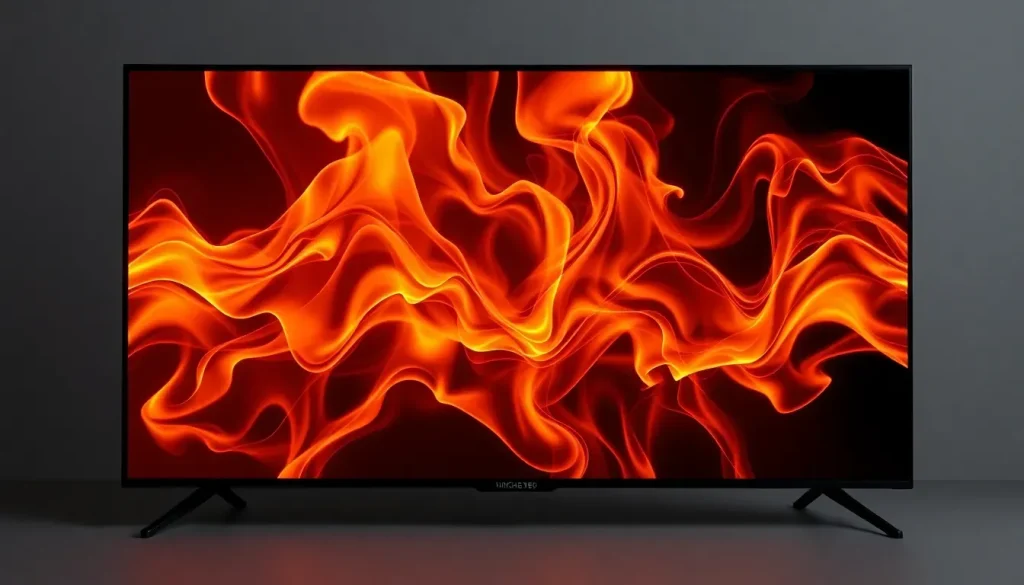How to Prevent Burn-in on Your OLED Display

As OLED technology continues to gain ground in the world of displays, many users are discovering its stunning visual capabilities. However, with these advancements comes a significant concern that can tarnish the experience: burn-in. Understanding how to protect your OLED displays from burn-in is essential for maximizing their lifespan and enjoying their vibrant colors and deep blacks for years to come.
In this article, we will delve into the nature of OLED technology, the challenges it faces, and the strategies you can implement to combat burn-in effectively. By arming yourself with knowledge, you'll be better prepared to enjoy your OLED devices without the looming dread of permanent image retention.
- The challenge of burn-in with OLED technology
- Understanding image retention vs. burn-in
- Maintenance and support for OLED displays
- Pixel refresh: An essential maintenance routine
- Panel refresh and its self-calibration benefits
- Additional protective measures: Pixel shifting and more
- Practical tips to avoid burn-in on OLED displays
- Long-term considerations: Will OLED burn-in ever be fixed?
- Conclusion
The challenge of burn-in with OLED technology
OLED displays are celebrated for their incredible contrast ratios, rich color reproduction, and the ability to render true blacks by completely turning off individual pixels. However, this remarkable technology is not without its drawbacks. One of the most significant issues is the risk of burn-in, which occurs when static images are displayed for extended periods. This can lead to permanent ghost images that detract from the overall viewing experience.
Burn-in can arise from everyday usage scenarios, especially when using static content like:
- Desktop icons
- Application interfaces
- Taskbars
- Logos in television broadcasts
Understanding the nature of burn-in is crucial. It can manifest in different forms, ranging from temporary image retention to permanent burn-in. The former is often a minor issue that resolves itself, while the latter can result in a significant degradation of display quality.
Understanding image retention vs. burn-in
Image retention and burn-in, although often used interchangeably, are distinct phenomena:
- Image retention: A temporary condition where a faint image persists on the screen but disappears after a short time.
- Burn-in: A permanent state in which certain pixels age faster than others due to prolonged exposure to static images, resulting in lasting ghost images.
The aging process of OLED panels occurs as the organic materials used in their construction degrade over time. This degradation can be accelerated by leaving static images displayed for too long. Fortunately, many manufacturers are aware of this issue and have implemented various maintenance features to help mitigate the risks associated with burn-in.
Maintenance and support for OLED displays
To combat burn-in effectively, you should familiarize yourself with the maintenance features available in your OLED devices. Manufacturers often include built-in support mechanisms that help preserve display quality. For instance, most OLED monitors and laptops come equipped with maintenance routines accessible through the on-screen display (OSD).
Here are some common maintenance features:
- Pixel Refresh: This process automatically checks and recalibrates the voltage levels of the pixels, helping to restore uniform brightness.
- Panel Refresh: Activates after a specified usage time to recalibrate pixels that have experienced prolonged brightness, ensuring even aging across the display.
- Burn-in Prevention Features: Many devices include additional settings to reduce the risk of burn-in, such as pixel shifting and logo dimming.
Pixel refresh: An essential maintenance routine
The pixel refresh function is a crucial maintenance routine designed to prevent burn-in. This process automatically recalibrates the threshold voltage of the pixel transistors, which can shift during operation. By correcting these voltage levels, the pixel refresh helps ensure that all pixels age at the same rate, thus avoiding the formation of ghost images.
Most devices initiate pixel refresh automatically after a certain number of operating hours. Some monitors, for example, may prompt you for a refresh after as little as four hours of usage. Engaging in this routine is a simple yet effective way to prolong the life of your OLED display.
Panel refresh and its self-calibration benefits
Panel refresh is another self-protection mechanism integrated into OLED displays. This process occurs after a specified period of usage and recalibrates the brightness and light duration for each pixel. By boosting the power supply to pixels that have dimmed due to extended use, panel refresh helps ensure a more uniform display quality over time.
It's essential to keep your OLED monitor connected to a power source during this process; otherwise, the panel refresh may not activate. Most manufacturers recommend keeping your device plugged in, even during standby periods, to allow these protective measures to function optimally.
Additional protective measures: Pixel shifting and more
To further protect your OLED display, several additional features may be available, particularly in gaming monitors and laptops:
- Pixel Shifting: This feature subtly shifts the displayed image periodically to prevent any specific pixel from being overused.
- Logo Dimming: This function detects static logos and reduces their brightness to minimize the risk of burn-in.
- Screen Savers: Setting up a screensaver to activate after a short period of inactivity can help keep your OLED display safe from static images.
These protective features are designed to work seamlessly in the background, allowing users to enjoy the stunning visuals of OLED technology without worrying about burn-in.
Practical tips to avoid burn-in on OLED displays
In addition to the built-in maintenance features, users can take proactive steps to minimize the risk of burn-in. Here are some practical tips:
- Hide the taskbar: In Windows, you can enable the option to automatically hide the taskbar, preventing it from being a static element on your display.
- Utilize dark mode: Activating dark mode can reduce the number of bright pixels on your screen, thereby minimizing the risk of uneven aging.
- Use full-screen mode: Always use full-screen mode when watching videos or playing games to avoid static borders or overlays.
- Adjust brightness settings: Utilize ambient light sensors or manually adjust brightness to avoid excessive luminance in specific areas.
- Activate screensavers: Ensure your screensaver is set to a dark image or a moving display to prevent static images from lingering on the screen.
Long-term considerations: Will OLED burn-in ever be fixed?
While OLED technology has advanced significantly, the issue of burn-in remains a concern. Manufacturers are continuously working to enhance the durability of OLED displays, but as organic materials are inherently susceptible to wear, some level of risk will always exist.
It is crucial for users to remain vigilant and implement the recommended preventive measures. As the technology evolves, we may see improvements in how OLED displays handle static images, but until then, awareness and proactive care are the best defenses against burn-in.
For those interested in real-life experiences, you can explore this video on the challenges and considerations surrounding OLED burn-in:
Conclusion
By understanding the risks associated with OLED technology and actively utilizing maintenance features and preventive measures, users can enjoy the rich visual experience that OLED displays offer without the fear of burn-in. Stay informed, and your OLED devices will continue to provide stunning images for years to come.




Leave a Reply